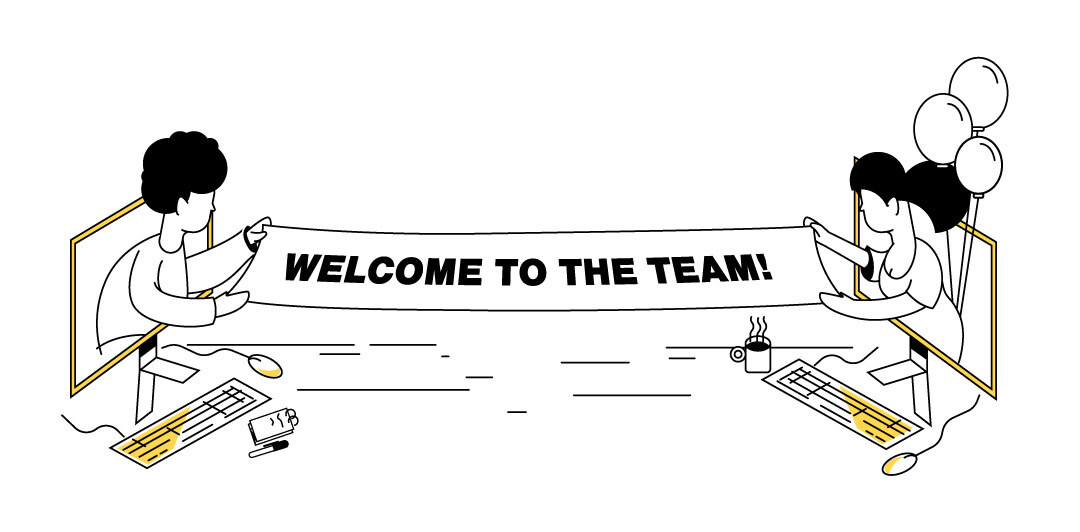Illustration: Theo Lamar
A year ago, I couldn’t have guessed an online sangria-making workshop led by a troupe of Portuguese drag queens would be a part of our onboarding process.
But 2020 has thrown a lot of playbooks out the window.
For most companies, growing your team is hard at the best of times. Onboarding is a time suck. Preserving culture at scale is an uphill battle. And making sure everyone’s on the same page about goals and values can be a challenge.
So when I found out earlier this year we’d be doing all that remotely for our next growth spurt—more than tripling company size with hundreds of employees who had never set foot in the office or had a chance to meet anybody who worked here—I was concerned, to put it lightly. Would the center hold?
As it turns out, my fears were totally misplaced. The chaos and disruption of COVID-19 has caused plenty of growing pains for businesses everywhere, but it’s also forced us to reevaluate so many tired truisms of work, from fixed hours to physical shared workspaces. And, as I’ve discovered, onboarding is one area that’s ripe for overhaul.
More than six months into this process, I can confidently say that remote onboarding has forced us to get more efficient, effective, and creative. Importantly, it’s not about recreating in-person onboarding; it’s about reconceiving the process. The result is an up-leveling that will ultimately reap returns whether office life resumes or we stay remote for the long haul.
For other companies out there entering a remote growth spurt, here’s a lens into what’s worked for us (and what hasn’t.)
Admit it: Your old onboarding sucked
It would be generous to call our orientation back in the early days a “process.” Like a lot of startups, we were flying by the seat of our pants and doing whatever we could to get new employees up to speed ASAP. Sometimes we were moving so fast and scaling so haphazardly that I’d end up handing over my desk to the new hire on their first day because we hadn’t had time to prepare a workstation yet.
Having a less-than-perfect onboarding system, though, is not an anomaly. While positive onboarding experiences can improve employee retention by 82 percent, only 12 percent of employees agree that their organization does it well. (Which should be worrying: a negative onboarding experience means a new hire is twice as likely to look for job opportunities elsewhere.)
RELATED: How Simon Bourgeois Can Cut 7 Hours From Your Work Week With Humi
Too often, imparting info to new hires is dependent on ad hoc interactions and serendipity. But the COVID-19 pandemic changed that. Pre-crisis, we had been shifting our process already to accommodate a fast-growing team. But when the pandemic hit, we were forced to get seriously methodical. When all interactions are mediated through Zoom or Slack, you’ve really got no choice—either systemitize or risk hundreds of new hires falling through the cracks.
Stop leaning on serendipity and codify your process
Those first days on the job used to be improvised—a little schmoozing, maybe a team lunch, a chat with your manager. Now our new hires are surprised to open up their Google calendar in their first hour of work and discover it’s already completely filled up for the next two weeks (including times for breaks and fresh air.)
Our people team has this down to a science: with the click of a button, a new hire’s schedule is populated with everything they need to do over those first weeks. Some might consider that overly structured, but companies with a standardized onboarding experience see a 62 percent increase in employee productivity.
There’s the obvious stuff, like welcome meetings and filling out paperwork. But we also bake-in informal bonding moments that are easy to overlook in the remote context. That may take the form of a scavenger hunt to identify fellow employees (i.e. “Find someone who speaks Farsi as a second language”) or an UberEats virtual lunch date with a colleague. This isn’t just filler: studies show that quality relationships between co-workers lead to improved collaboration, morale, productivity, and retention.
And we no longer wait for a friendly employee to take the newbie under their wing—we assign an official buddy to help show the way and build cross-company bridges. It’s not rocket science, but buddy systems statistically boost proficiency. (No wonder Buffer has a three-buddy system as part of its own onboarding.)
The goal is for information to be passed down methodically, consistently and clearly—not just for the benefit of our new team members, but for our current ones, too. The hard truth is that even the best onboarding is a drain on existing employees. The average new hire receives 32 hours of training from colleagues, according to research. With hundreds of employees coming in the door, it’s mission-critical that we make this process efficient and repeatable.
Reconceive culture—and how to impart it.
A huge (and often overlooked) part of onboarding is imparting culture. Pre-COVID, company culture was too often conflated with in-office perks. But foosball, beers on Friday and holiday parties are ultimately not what gives your company its heart.
Don’t get me wrong: that stuff’s all fun and definitely plays a role in team bonding (as Secrets with Sangria clearly shows), but the core of culture is really about having clear values. I’m not just saying that as the founder of the company: it matters to my coworkers, too. 79 percent of people consider a company’s mission and purpose before applying, and workers driven by that mission are 54 percent more likely to stick around for the long-haul.
A big part of this is knowing who the customer is and actually giving a damn about helping them. To that end, we now assign all new employees shifts on customer support, to talk directly with real people who are using our product and get to know their challenges firsthand. Moreover, part of onboarding requires employees to build and market their own online course. Even if it’s just “the ultimate butter chicken recipe” (a real-life example from one of our recent hires), it’s a chance to get inside the customer’s head, while sharing something with the team.
RELATED: Here’s How You Can Get A Free Ivy League Education During the Pandemic
Finally, remote work has also accelerated and amplified something long overdue: turning values on a page into a trackable metric. We use the online platform 7Geese to allow coworkers to cite one another for living our core values. This data is compiled in real-time and contributes directly to promotions or raises. This is culture, with tangible results.
Ultimately, this whole remote experience has served as an important wake-up call—onboarding and culture were in desperate need of upgrading before the crisis ever started. Our pre-COVID work lives were full of examples of how we failed to connect, even when we were literally face-to-face. Case in point: I used to work in a law firm that had an amazing culture on my floor; but I didn’t even know the people just a few flights of stairs below. Nothing against the firm, at all—it’s just impossible to connect face-to-face with everyone in a 10,000-deep organization, even if you do have a physical office.
So wherever we wind up from here, honing your onboarding process now is only going to serve you in the future. This isn’t just lip service. A recent internal survey showed our employees gave us an employee net promoter score (eNPS) of 93. (For reference, anything above 50 is considered excellent.) Upleveling isn’t always easy. But improved onboarding will reap returns long after the crisis is over—whether you’re under one roof or spread across the globe.
Greg Smith is the Founder and CEO of Thinkific, the leading platform for creating and selling online courses.
[yikes-mailchimp form=”1″ title=”1″ submit=”SUBSCRIBE”]








